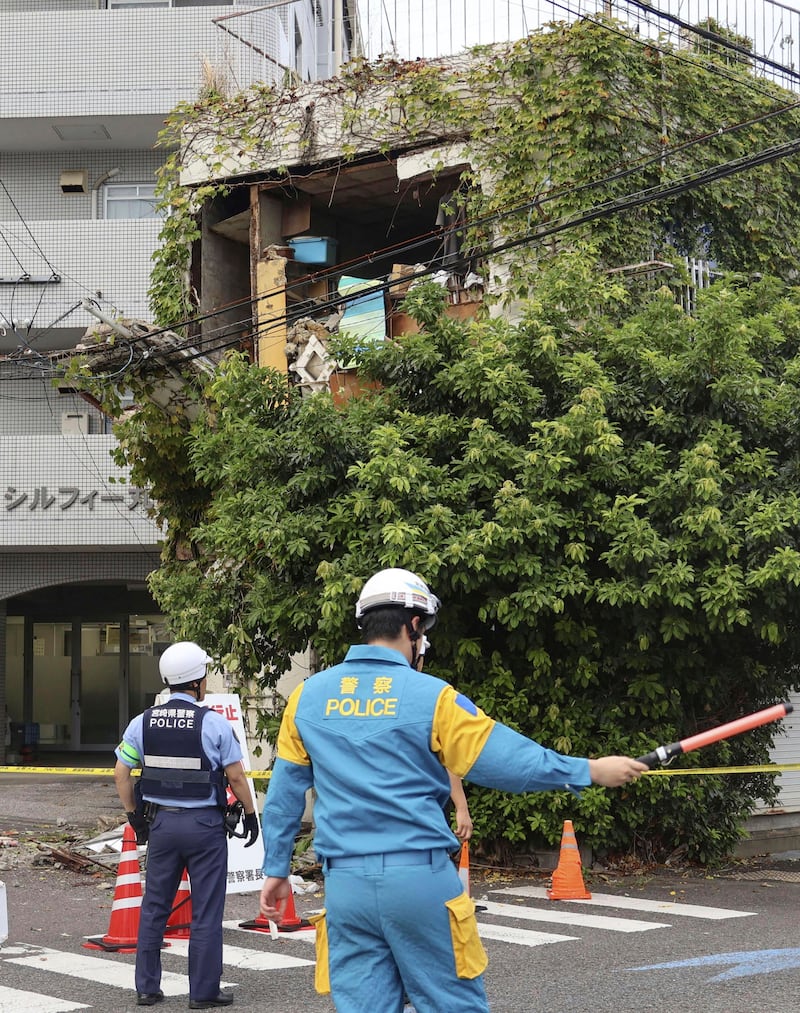A powerful earthquake struck off Japan’s southern coast on Thursday, triggering a tsunami advisory that urged residents to stay away from the coastline.
Nine people were injured, most of them slightly, but there were no reports of serious damage.
The Japan Meteorological Agency (JMA) said the quake registered a magnitude of 7.1 and was centred in waters off the eastern coast of Japan’s southern main island of Kyushu at a depth of about 30km.
The quake most strongly shook Nichinan city and nearby areas in Miyazaki prefecture on Kyushu island.
‘Pete Hegseth texted me the war plan’: How top US officials shared military strike details in group chat with journalist
Israel reinstating military rule in Gaza would have big implications
Trial of alleged former Red Army Faction terrorist to open in Germany
How Jeff Bezos made peace with Donald Trump
The agency said tsunami waves of up to 50cm were detected along parts of Kyushu’s southern coast and the nearby island of Shikoku about half an hour after the quake struck.
The tsunami advisory was later lifted from most coastlines except those along the Miyazaki prefecture.
Seismologists at the agency held an emergency meeting to analyse whether the quake had affected the nearby Nankai Trough, the source of past devastating earthquakes.
They later issued an assessment that the potential for a future quake in the area from Kyushu to central Japan is higher than previously predicted.
The agency said it will continue to closely watch movements of plates near the Nankai Trough.

That does not mean there is an imminent danger of a big quake in the near future, but they urged residents on the coasts along the trough – which spans about 500km – to review their quake preparedness, University of Tokyo seismologist Naoshi Hirata, a member of an expert panel, told a joint news conference with JMA officials.
There is a 70 per cent to 80 per cent chance of a magnitude 8 or 9 quake stemming from the Nankai Trough within the next 30 years, Prof Hirata said, adding that Thursday’s quake raises that probability even though the timing or exact location cannot be predicted.
The Fire and Disaster Management Agency said nine people were injured, most of them slightly, when falling down or hit by objects in Miyazaki and neighbouring Kagoshima.
Chief cabinet secretary Yoshimasa Hayashi said officials are assessing possible injuries or serious damage, though none was immediately reported. He urged residents of the affected region to stay away from the coastline.
JMA seismology department official Shigeki Aoki warned that strong aftershocks could occur for about a week.
Japan’s NHK public television said windows were broken at Miyazaki airport near the epicentre, and the airport’s runway was temporarily closed for safety checks.
NHK showed dozens of people gathering at a designated hilltop evacuation area.
In Osaki in neighbouring Kagoshima prefecture, concrete walls collapsed and a wooden house was damaged, but no injuries were reported.
The Nuclear Regulation Authority said all 12 nuclear reactors, including three that are currently operating, on Kyushu and Shikoku remained safe.
Earthquakes in areas with nuclear power plants have been a major concern since a massive earthquake and tsunami in March 2011 triggered the Fukushima nuclear disaster.
Japan sits on the Pacific Ring of Fire, a line of seismic faults encircling the Pacific Ocean, and is one of the world’s most earthquake-prone countries. – AP














